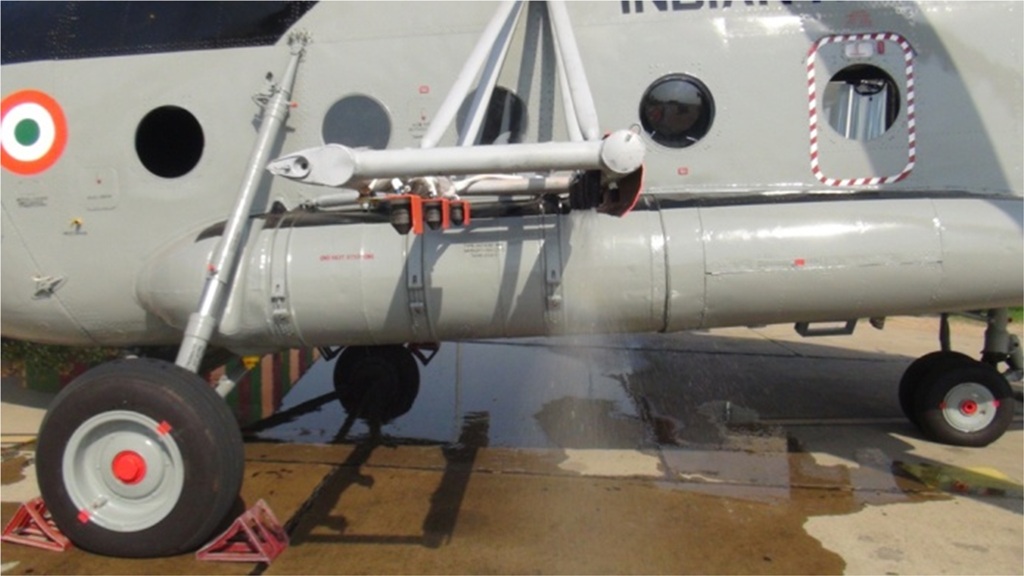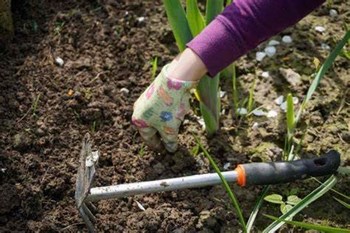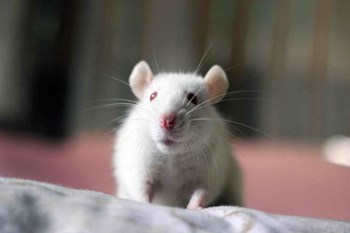
ആപത്ഘട്ടത്തില് ഉണര്ന്നു പ്രവര്ത്തിക്കുന്നവരാണ് സേനാ വിഭാഗം. അത് ഒരിക്കല് കൂടി തെളിയിച്ചിരിക്കയാണ് ചാണ്ഡിഗഡിലെ ബേസ് റിപ്പയര് ഡിപ്പോ. വെട്ടുകിളി ആക്രമണം മുന്നിര്ത്തി കൃഷി മന്ത്രാലയം ഇംഗ്ലണ്ടിലെ മൈക്രോണ് കമ്പനിയുമായി ഉണ്ടാക്കിയ ധാരണപ്രകാരം വെട്ടുകിളികളുടെ പ്രജനനം തടയുന്നതിന് ആട്ടോമൈസ്ഡ് പെസ്റ്റിസൈഡ് സ്പ്രേയിംഗിനായി രണ്ട് എംഐ-17 ഹെലികോപ്റ്ററുകള് നവീകരിക്കാന് തീരുമാനിച്ചിരുന്നു. എന്നാല് കോവിഡ്-19 വ്യാപനത്തെ തുടര്ന്ന് നവീകരണ സംവിധാനം തയ്യാറാക്കി നല്കാന് കമ്പനിക്ക് കഴിഞ്ഞില്ല. ഇനി തയ്യാറാക്കിയാലും അതിന്റെ ട്രയല് നടത്താന്തന്നെ 2020 സെപ്തംബര് വരെ കാത്തിരിക്കേണ്ടി വരും എന്നതായിരുന്നു അവസ്ഥ. എന്നാല് മെയ്മാസം അവസാനത്തോടെ വെട്ടുകിളി ശല്യം വ്യാപകമാവുകയും ചെയ്തു.
പൂര്ണ്ണമായും ഇന്ത്യന് നിര്മ്മിതം
ഈ പ്രതിസന്ധി ഘട്ടത്തിലാണ് ചണ്ഡിഗഡിലെ നമ്പര്-3 ബേസ് റിപ്പയര് ഡിപ്പോ എയര്ബോണ് ലോക്കസ്റ്റ് കണ്ട്രോള് സിസ്റ്റം ( ALCS) തയ്യാറാക്കാനുളള ഉത്തരവാദിത്തം ഏറ്റെടുത്തത്. പൂര്ണ്ണമായും ഇന്ത്യന് ഉപകരണങ്ങള് ഉപയോഗിച്ച് ഹെലികോപ്റ്ററിന്റെ ഇരുവശങ്ങളിലുമുള്ള നോസില് കോണ്ഫിഗറേഷന്സ് കീടനാശിനി തളിക്കലിന് സജ്ജമാക്കിയിരിക്കയാണ് ഇവിടത്തെ എന്ജിനീയര്മാര്. കൊമേഴ്സ്യലായി ലഭ്യമായ നോസിലുകളും CSIO വികസിപ്പിച്ച നോസിലും ഉപയോഗിച്ചാണിത് തയ്യാറാക്കിയത്. ശാസ്ത്രീയമായ അളവില് തയ്യാറാക്കിയ മാലത്തിയോണ് കീടനാശിനി 800 ലിറ്റര് വരുന്ന ആക്സിലറി ടാങ്കില് നിറച്ച്, ഇലക്ട്രിക്കല് പമ്പും കംപ്രസ്ഡ് എയറും ഉപയോഗിച്ച് നോസിലുകളില് എത്തിച്ച് 750 ഹെക്ടര് പ്രദേശത്ത് 40 മിനിട്ട് സ്േ്രപ ചെയ്യുക എന്നതാണ് മിഷന്.

പദ്ധതി വിജയകരം
എംഐ-17 ഹെലികോപ്റ്ററില് ബാംഗ്ലൂരിലെ ടെസ്റ്റ് പൈലറ്റുമാരും ടെസ്റ്റ് എന്ജിനിയേഴ്സും ഈ സംവിധാനം ട്രയല് ചെയ്ത് വിജയകരമാണ് എന്ന് സര്ട്ടിഫൈ ചെയ്തിട്ടുണ്ട്. മാലത്തയോണ് തളിക്കുന്നതിന് ഹെലികോപ്റ്ററുകള് സജ്ജമായിക്കഴിഞ്ഞു. ഇന്ത്യന് നിര്മ്മിത സംവിധാനമായതിനാല് മെയിന്റനന്സ്, ഭാവിയിലെ അപ്ഗ്രഡേഷന് എന്നിവ എളുപ്പമാകും എന്നു മാത്രമല്ല വിദേശനാണയം ലാഭിക്കാനും ഇത് സഹായിച്ചു.ഏവിയേഷന് സാങ്കേതിക വിദ്യയില് സ്വയം പര്യാപ്തത എന്ന ലക്ഷ്യത്തിലേക്ക് ഒരു ചുവടുവയ്പുകൂടിയായി ഇതിനെ കാണാം.
INDIGENOUS AIRBORNE LOCUST CONTROL SYSTEM ON MI-17 HELICOPTER
Anticipating Locust attack, Ministry of Agriculture signed a contract with M/s Micron, UK to modify two Mi-17 Helicopters for spraying atomized pesticide to arrest Locust breeding in May 2020. Due to COVID-19 pandemic, the UK based firm would be able to manufacture and supply the modification kit to IAF only from Sep 2020 onward for system integration and testing. In the meanwhile, an unprecedented Locust attack started manifesting from last week of May and was fast spreading practically across many States.
In view of envisaged delay in provisioning of modification kits by M/s Micron, the Indian Air Force tasked No. 3 Base Repair Depot located at Chandigarh to undertake the challenging task of indigenously designing and developing an Airborne Locust Control System (ALCS) for Mi-17 helicopters. Using all indigenous components, the atomized airborne spraying of pesticide has been successfully achieved in air through a configuration of nozzles mounted both sides on external trusses of a Mi-17 helicopter. The nozzles used for the purpose are a mix of commercially available nozzles as well as the nozzles developed by CSIO, Chandigarh. The pesticide Malathion in appropriate concentration would be filled in the internal Auxiliary tank of 800 litres capacity fitted inside the helicopter and pumped into the nozzles by using an electrical pump as well as compressed air, achieving nearly 40 minutes of spaying duration in the infected zone covering an area of approximately 750 hectares in each mission.
A team of Test Pilots and Test Engineers of Aircraft and Systems Testing Establishment, Bangalore have successfully carried out ground and airborne trials of ALCS on a modified Mi-17 helicopter. The system is being offered for use with Malathion for employment in the locust control operation.
Being an indigenously developed system, the ALCS would offer inherent advantages of in-house maintenance, future upgradeability, saving of foreign exchange and help in making the country Self Reliant in aviation-related technology.
കൂടുതൽ അനുബന്ധ വാർത്തകൾ വായിക്കുക: സംസ്ഥാന കര്ഷക അവാര്ഡുകള്ക്കുളള അപേക്ഷ ക്ഷണിച്ചു

























Share your comments